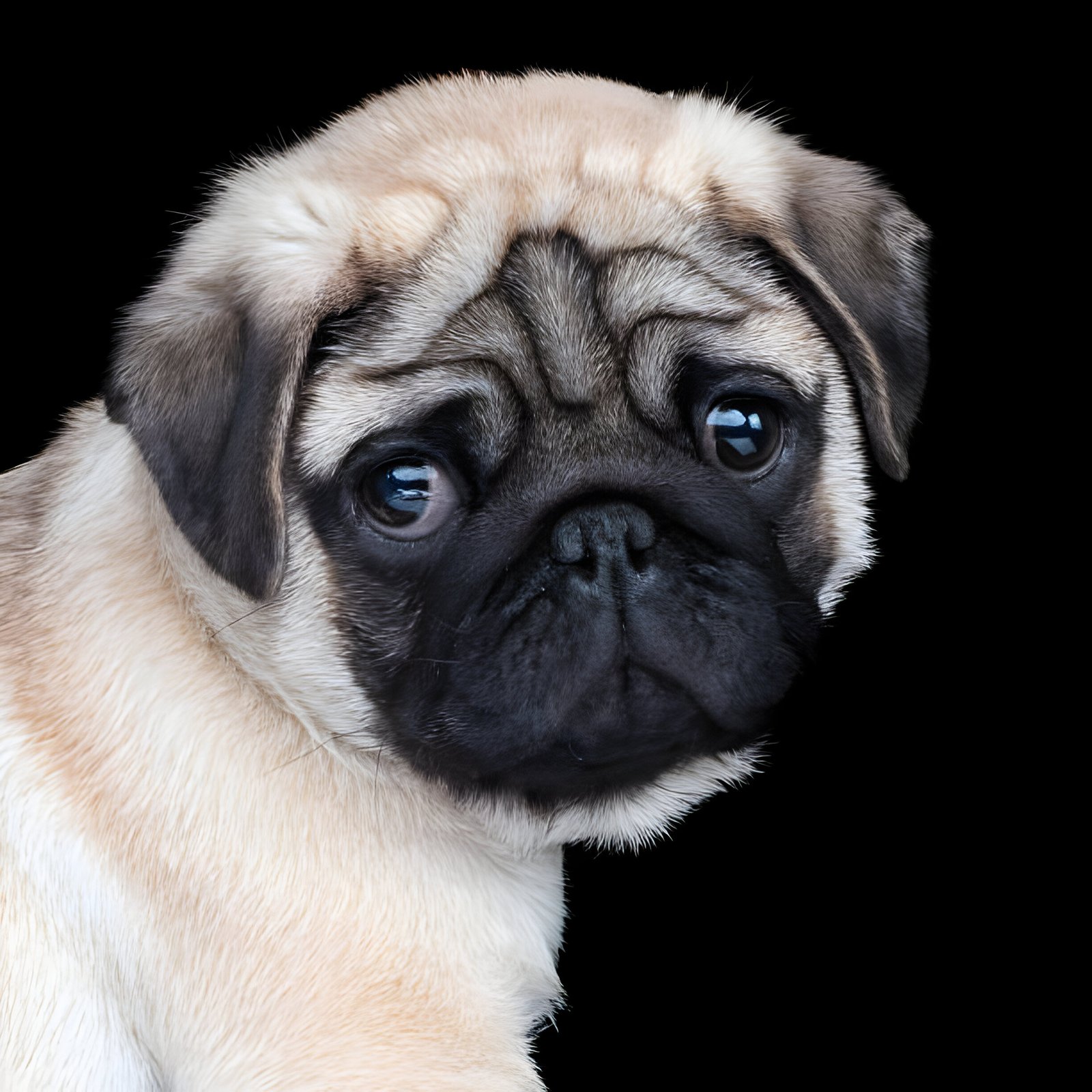Image Credits : Gettyimage
Pugs are beloved for their adorable squished faces and big, expressive eyes. However, these same features can lead to concerns about their eye health. Many pug owners worry about whether their furry friend’s eyes can actually fall out. This article aims to address this concern and provide valuable information about pug eye health.
We’ll explore the unique anatomy of pug eyes and examine whether they can truly pop out. The article will also cover signs and symptoms of eye problems in pugs, as well as prevention and care tips. By the end, readers will have a better understanding of how to keep their pug’s eyes healthy and what to do if issues arise.
Understanding Pug Eye Anatomy
Pugs, along with other brachycephalic breeds like French Bulldogs, Boston Terriers, Chihuahuas, Pekingese, and Shih-Tzus, have a unique eye anatomy that makes them prone to various eye-related issues. To comprehend these potential problems, it’s essential to understand the distinct characteristics of their eye structure.
Brachycephalic breed characteristics
Brachycephalic breeds are known for their flattened faces and round skull shapes. This distinctive feature has made them increasingly popular as pets due to their appealing large eyes and wrinkly faces. However, this facial structure comes with several anatomical peculiarities that affect their eyes:
- Excessively wide eyelids
- Inability to close eyelids completely
- Abnormal tear production
- Reduced corneal sensitivity
These characteristics contribute to what is collectively known as Brachycephalic Ocular Syndrome, which predisposes these breeds to various eye-related issues.
Shallow eye sockets
One of the most significant features of pug eye anatomy is their shallow eye sockets, also known as orbits. This shallow structure results in:
- A physiological degree of exophthalmos (bulging eyes)
- Less protection for the eyeball compared to breeds with deeper orbits
- Increased risk of eye injuries and trauma
The shallower the eye socket, the more prominent the eye becomes, making it more susceptible to potential harm.
Protruding eyes
The combination of shallow eye sockets and excessively long palpebral fissures (eyelid openings) leads to the characteristic protruding eyes in pugs. This feature has several implications:
- Inadequate eye coverage and lubrication
- Increased exposure of the cornea
- Higher risk of eye-related problems such as ulcers, keratitis, and traumatic proptosis
These protruding eyes, while endearing, make pugs more vulnerable to eye injuries and require special care and attention from their owners.
Can Pugs’ Eyes Really Pop Out?
Definition of proptosis
Proptosis is a medical condition that can affect pugs and other brachycephalic breeds. It occurs when the eyeball becomes displaced from its socket, either partially or entirely. This condition is often referred to as the eye “popping out.” In pugs, proptosis causes the eye to protrude beyond the eyelid, resulting in the eyelid dangling from the eye socket.
Frequency of occurrence
While the idea of a pug’s eye popping out may sound alarming, it’s important to note that this condition is not as common as some might believe. Most pugs will never experience proptosis during their lifetime. However, due to their unique facial structure, pugs are more susceptible to this condition compared to breeds with longer muzzles. Veterinarians may encounter several cases of one-eyed pugs throughout their careers, but it remains a relatively infrequent occurrence.
Risk factors
Several factors contribute to the increased risk of proptosis in pugs:
- Shallow eye sockets: Pugs have abnormally shortened skulls, resulting in eyes that don’t sit as far back in the sockets as those of dogs with normal skull structures.
- Protruding eyes: The shortened skull and wide face of pugs cause their eyes to appear larger and more prominent, making them more vulnerable to injury.
- Pressure on the face or neck: Even a small amount of pressure applied to the face, skull, or areas around the eye can cause the eye to pop out. This can occur during rough play or accidents.
- Collar-related issues: Using a collar instead of a harness can increase the risk of proptosis, especially if pulled too hard.
- Trauma: Accidents such as hitting the head against an object, falls, or being hit by a blunt object can lead to proptosis.
Signs and Symptoms of Eye Problems
Physical Indicators
Pugs and other brachycephalic breeds are prone to various eye problems due to their unique facial structure. Some common physical signs include:
- Redness in the white part of the eye
- Excessive tearing or discharge
- Swollen or bulging eyes
- Corneal edema (blue or white haze in the eye)
- Brown pigment buildup on the cornea
- Visible wounds or ulcers on the eye surface
These physical indicators often result from the shallow eye sockets and protruding eyes characteristic of pugs. The inability to blink properly and excessive exposure of the cornea can lead to damage and irritation.
Also Read : Who is Johnny Depp Dating Now
Behavioral Changes
Owners may notice behavioral changes in their pugs that indicate eye problems:
- Squinting or holding the eyes partially closed
- Excessive blinking or sensitivity to light
- Rubbing at the face and eyes
- Bumping into objects or misjudging distances
- Not recognizing people or familiar objects
- Decreased appetite and lethargy
These behaviors often suggest discomfort or vision impairment. In some cases, pugs may even sleep with their eyes open due to their inability to close their eyelids completely.
When to Seek Veterinary Care
It is crucial to seek veterinary care immediately if any of the following occur:
- Sudden changes in eye appearance or behavior
- Signs of pain or discomfort
- Visible wounds or ulcers on the eye
- Prolapse of the eyeball (a medical emergency)
- Gradual worsening of vision during the day
Early intervention is key to preventing more serious complications such as blindness or the need for eye removal. Regular check-ups can help detect and address eye problems before they become severe.
Prevention and Care
Regular eye cleaning
Pug owners should clean their dog’s eyes at least once or twice a day. This is particularly important for pugs and other brachycephalic breeds prone to eye problems. To clean a pug’s eyes:
- Use hypoallergenic toilet paper or a soft, warm washcloth.
- Start in the corner of the eye and work outward.
- Use a different piece of toilet paper or cloth for each eye to prevent cross-contamination.
- Be gentle and build trust with the dog over time.
For pugs with heavy eye discharge, owners can use a flea comb to remove crusty buildup. After cleaning, applying cornstarch with a q-tip can help absorb moisture and extend the time between cleanings.
Avoiding trauma
To prevent eye injuries in pugs:
- Avoid letting dogs ride in vehicles with their heads out the window.
- Be cautious of tree branches and other objects that could scratch the eyes.
- Supervise interactions with other animals to prevent fights.
- Keep dogs away from dangerous projectiles like fireworks.
Proper harness use
Using a harness instead of a collar is safer for pugs and other brachycephalic breeds. Harnesses offer several benefits:
- They apply less pressure to the neck, reducing the risk of respiratory issues.
- They provide better control during walks.
- They are more secure, preventing dogs from slipping out.
When choosing a harness:
- Ensure it fits properly and allows for comfortable movement.
- Look for adjustable options to accommodate the pug’s unique body shape.
- Consider harnesses with built-in handles for added control and safety.
Conclusion
Pugs’ distinctive eye structure requires special attention and care from their owners. Their protruding eyes and shallow sockets make them more prone to issues, but with proper precautions, most pugs can live happy, healthy lives without experiencing severe eye problems. Regular cleaning, avoiding trauma, and using harnesses instead of collars are key steps to protect these adorable companions’ eyes.
Understanding pug eye health has a significant impact on their overall well-being. By staying alert to signs of eye issues and seeking prompt veterinary care when needed, pug owners can help ensure their furry friends maintain good vision and comfort throughout their lives. With the right knowledge and care, pug lovers can continue to enjoy those big, expressive eyes that make these dogs so endearing.
FAQs
What should I do if my Pug’s eye pops out?
If your Pug’s eye pops out, it is crucial to seek immediate veterinary care. The longer the eyeball remains out of its socket, the more challenging it may be to successfully reposition it.
How can I prevent eye problems in my Pug?
To help prevent eye issues in Pugs, you can apply protective ointments that act as a barrier on the eye’s surface. These ointments should be applied twice daily. Additionally, using ointments that stimulate tear production can improve the health of your Pug’s eyes by ensuring they remain lubricated.
Is it common for Pugs to lose their eyes?
Unfortunately, it is not uncommon for Pugs to lose an eye, often due to severe corneal ulcers. Pugs are particularly susceptible to these issues due to their oversized eyelids, which can lead to increased exposure and trauma to the cornea. This exposure heightens the risk of developing conditions like pigmentary keratitis and corneal ulcers.
How can I tell if my Pug has an eye infection?
Signs of an eye infection in Pugs include swelling around the eye, redness, and various types of discharge that may appear watery, white, reddish-brown, yellow, or green. Other indications include excessive blinking or squinting, sensitivity to light, and the dog pawing at the affected eye.




